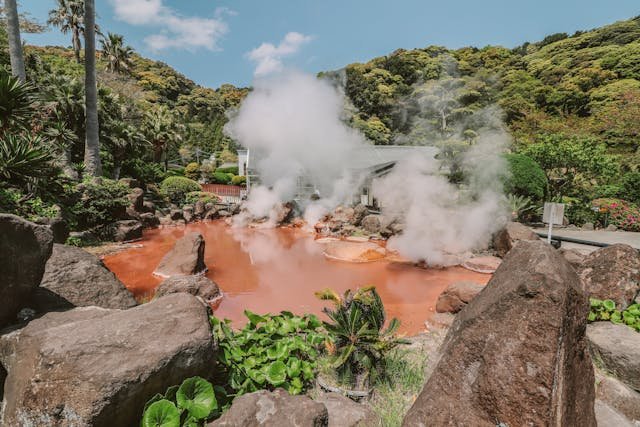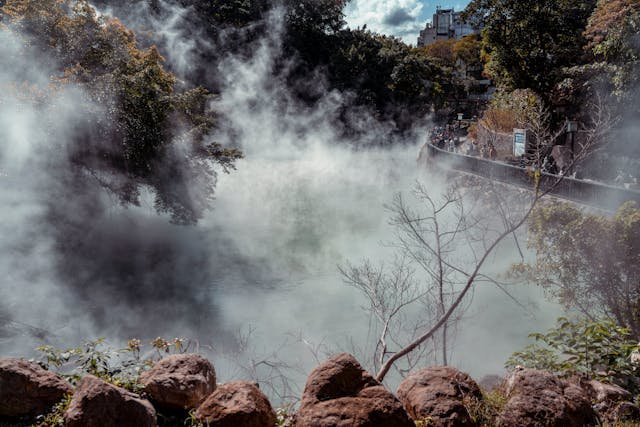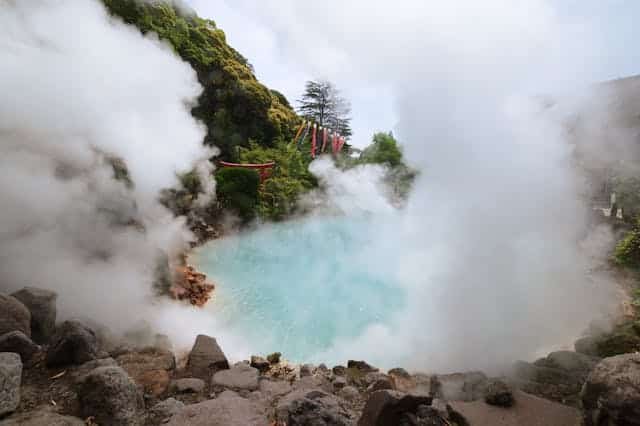If you are wondering where to find the most relaxing escapes in Japan, the answer is simple—mountain hot springs in Japan is where peace, nature, and healing come together. Imagine soaking in warm mineral waters surrounded by snowy peaks in winter or lush green valleys in summer. Mountain hot springs are not just baths, they are entire experiences where you can sleep in traditional inns, taste regional food, hike to hidden spots, and connect with nature in the purest way. Whether you’re traveling alone, with friends, or with family, mountain hot springs are a journey into comfort and discovery.
Now, let’s dive into the practical side—where to go, what to do, how to get there, and how to enjoy every moment.

Why Mountain Hot Springs in Japan Are Special
Mountain hot springs are famous because they combine natural beauty with cultural tradition. Unlike city spas, these hot springs are often tucked into valleys, cliffsides, and even inside mountain villages. The steam rises in the open air, and the sound of rivers or forests creates a magical atmosphere. The mineral-rich water is believed to help with stress, muscle pain, and even skin health. But the real magic is how the whole environment feels—like stepping into a natural sanctuary.

Best Regions for Mountain Hot Springs in Japan
Hakone – Easy Escape from Tokyo
Hakone is one of the most accessible mountain hot springs destinations. Just a short train ride from Tokyo, Hakone offers outdoor baths with views of Mount Fuji. Many inns here have private open-air baths where you can enjoy the mountain scenery in total privacy. Hakone also has ropeways, art museums, and lake cruises, making it perfect for a mix of relaxation and sightseeing.
Kusatsu – Healing Waters in the Mountains
Kusatsu is known for its strong sulfur-rich springs, considered among the best in the country. The town sits high in the mountains, surrounded by forests and ski slopes. The Yubatake (hot water field) in the town center is a unique sight, where steaming hot water flows through wooden channels before being distributed to the baths. Kusatsu is a must if you want the authentic mountain hot springs in Japan experience.
Gero – Classic Onsen Town
Gero is another gem in the mountains, famous for its soft and silky water. The town has public baths, traditional inns, and even footbaths on the streets where travelers can dip their feet for free. Gero makes it easy to walk from one bath to another, trying different styles in a single day. It’s a great way to experience mountain hot springs Japan without rushing.
Beppu – Mountain Steam Town
Although Beppu is on the island of Kyushu, it deserves a place on the mountain hot springs in Japan list because of its dramatic landscapes. The steam vents, hot mud pools, and unique “hell tours” make Beppu more than just a hot spring stop. Surrounded by hills and sea views, Beppu blends both mountain air and coastal energy.
Things to Do Around Mountain Hot Springs in Japan
Hiking and Nature Walks
Many mountain hot springs are near hiking trails. For example, Hakone has forest paths, waterfalls, and views of Mount Fuji. Kusatsu connects to mountain routes that change beautifully with the seasons. Hiking before soaking in a hot spring doubles the feeling of reward.
Staying in Ryokan Inns
A big part of enjoying mountain hot springs is staying in a ryokan, a traditional Japanese inn. Here, you sleep on tatami mats, wear yukata robes, and enjoy multi-course kaiseki meals. Many ryokan have baths fed directly by natural springs, often with outdoor pools overlooking valleys. It’s not just accommodation—it’s a cultural experience.
Seasonal Experiences
- Winter: Snow around outdoor baths creates a dreamy atmosphere. Mountain hot springs Japan in winter are like natural snow globes where you can soak under falling snowflakes.
- Spring: Cherry blossoms bloom near some mountain towns, making the baths extra scenic.
- Summer: Forests are green, rivers flow strong, and festivals bring energy to the villages.
- Autumn: Maple leaves turn red and gold, reflecting beautifully in the water.
Practical Travel Tips for Mountain Hot Springs in Japan
Getting There
- Trains: Most mountain hot springs Japan towns are connected by JR trains or private lines. If you have a Japan Rail Pass, you can save money traveling to Hakone, Gero, or Kusatsu.
- Buses: In more remote mountain towns, buses connect the stations to the hot springs.
- Cars: Renting a car gives freedom, especially for hidden hot spring spots deep in the mountains.
Budget Planning
Mountain hot springs can be enjoyed on different budgets:
- Luxury: High-end ryokan with private baths, kaiseki dinners, and full service can cost over $300 per night.
- Mid-range: Standard ryokan or hotels with shared baths often range between $100–$200 per night, including meals.
- Budget: Public bathhouses and guesthouses let you enjoy the springs for as little as $5–$10 per bath.
Bath Etiquette
When visiting mountain hot springs in Japan, follow these steps:
- Wash your body before entering the bath.
- Do not bring towels into the water.
- Keep quiet and respect the peaceful atmosphere.
- Tattoos may be restricted in some places, but private baths or tattoo-friendly spots are available.
Hidden Mountain Hot Springs in Japan
Nyuto Onsen – Secret Valley Retreat
In northern Japan, Nyuto Onsen is a collection of rustic baths hidden in the mountains. Some are surrounded by forests where mist lingers in the morning. It feels untouched, making it one of the most authentic mountain hot springs experiences.
Takaragawa Onsen – Riverside Paradise
Takaragawa Onsen is famous for its huge outdoor baths along a river. Surrounded by mountains and trees, this place feels like bathing inside a nature painting.
Iya Valley – Remote Escape
On Shikoku Island, Iya Valley offers hot springs in deep gorges with vine bridges and cliffs. This is one of the most off-the-beaten-path mountain hot springs spots, perfect for travelers who want peace and adventure.
Food and Drink Near Mountain Hot Springs in Japan
Local food is part of the adventure. Each hot spring town has its specialties:
- Hakone: Black eggs boiled in hot spring steam.
- Kusatsu: Mountain vegetables and hearty noodle dishes.
- Gero: Hida beef served grilled or in hot pots.
- Beppu: Dishes steamed directly in natural vents, known as “hell-steamed cooking.”
Pairing a hot soak with local meals makes the experience unforgettable.
Family-Friendly Mountain Hot Springs in Japan
Traveling with children? Many towns have baths designed for families with mixed-gender areas or private rentals. Outdoor baths with river or forest views are especially fun for kids. Some ryokan even offer family-size tubs where everyone can relax together.
Couples’ Escapes in Mountain Hot Springs in Japan
For couples, mountain hot springs are among the most romantic getaways. Private outdoor baths, tatami rooms, and candlelit dinners create unforgettable memories. Staying in a secluded ryokan in the mountains adds intimacy and quietness that city hotels cannot match.
Seasonal Festivals in Mountain Hot Springs in Japan
Many towns celebrate seasonal events:
- Firework festivals in summer near Hakone Lake.
- Snow lantern festivals in winter Kusatsu.
- Autumn leaf-viewing celebrations in Gero.
Combining a festival with a hot spring trip makes your journey even more colorful.
Final Thoughts
Mountain hot springs in Japan are more than just a soak—they are entire worlds of relaxation, culture, food, and scenery. From famous spots like Hakone to hidden gems like Nyuto Onsen, every trip offers something unique. The combination of steaming baths, fresh mountain air, and traditional inns makes these journeys unforgettable.
If you are searching for the perfect blend of healing water, mountain landscapes, and authentic Japanese hospitality, then mountain hot springs Japan is the answer. Plan your route, pick your favorite town, and get ready to experience one of the most soothing adventures Japan has to offer.
People also ask about: Robot Villages in Japan Where Tourists Can Sleep!

